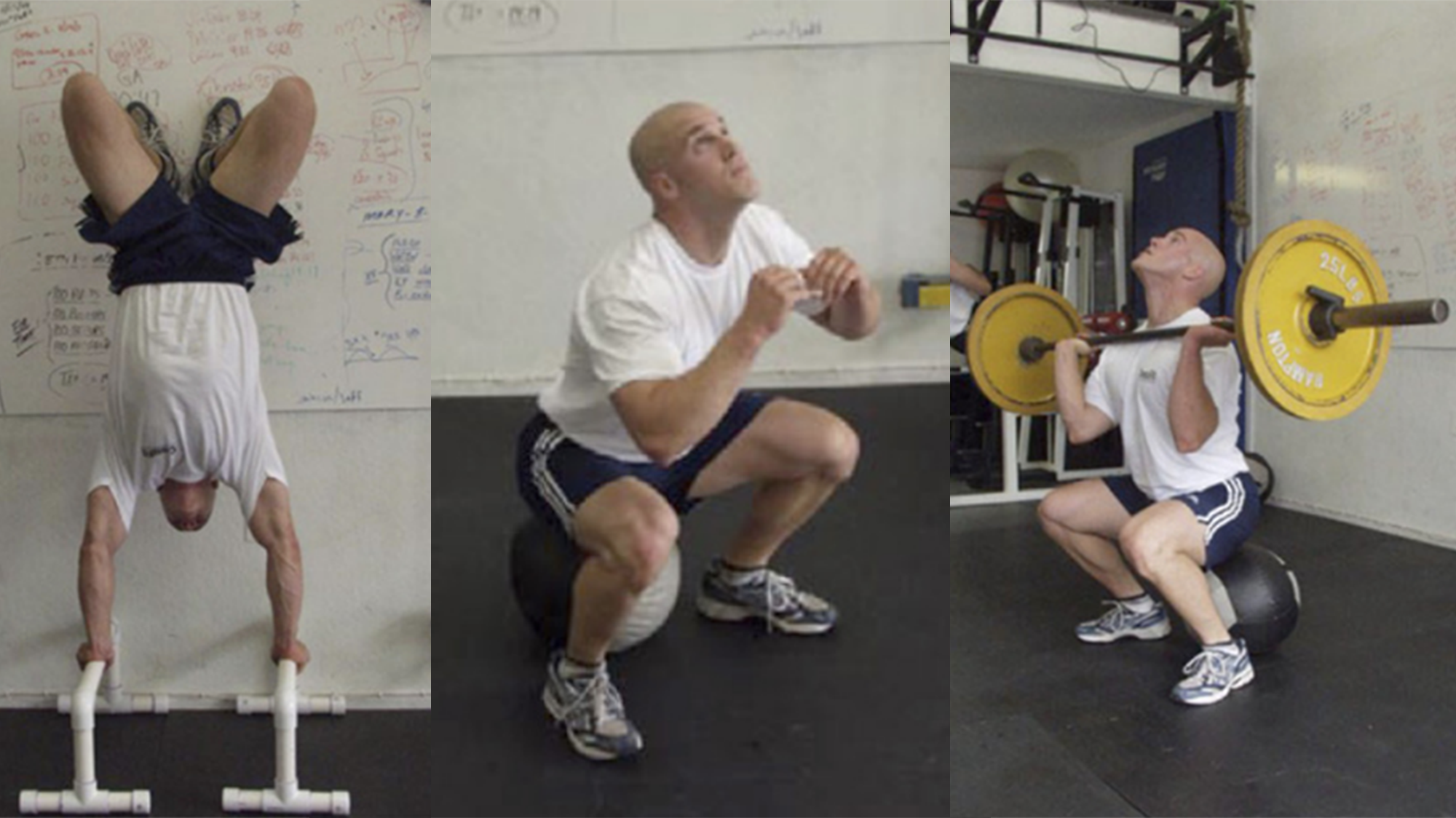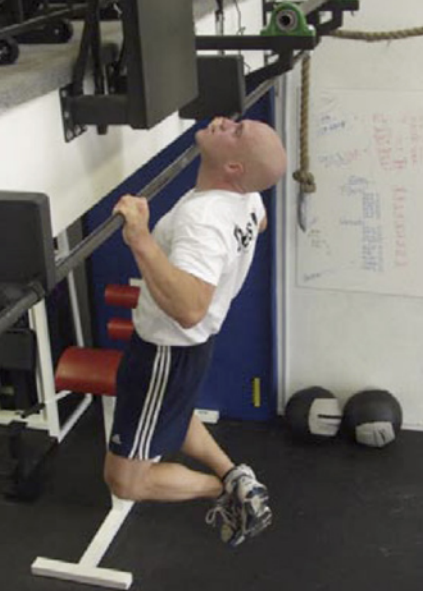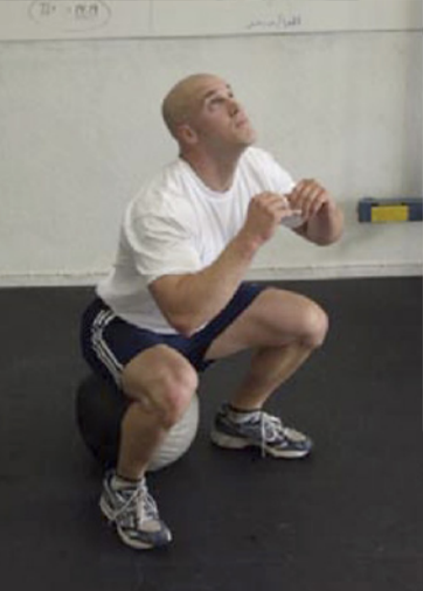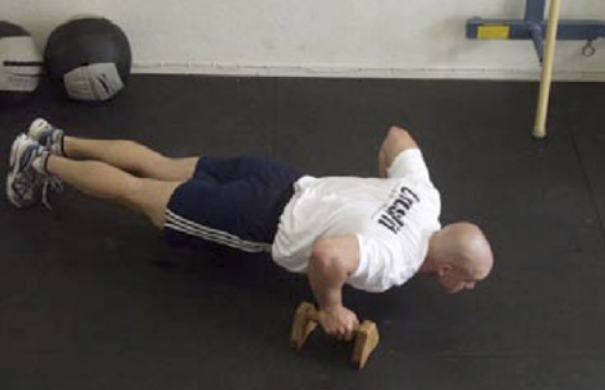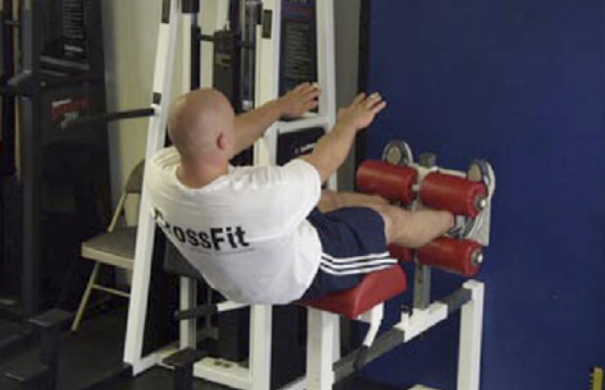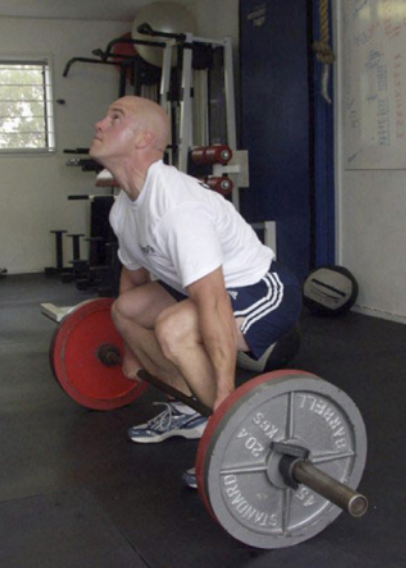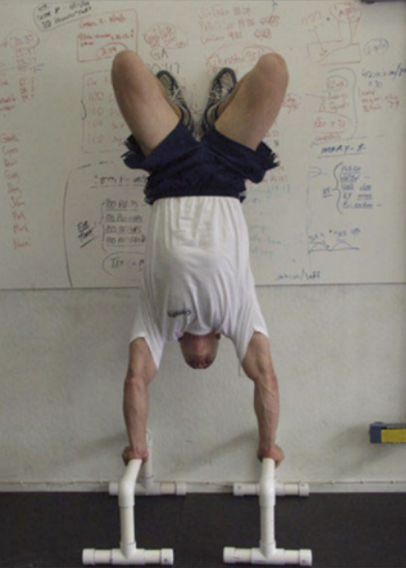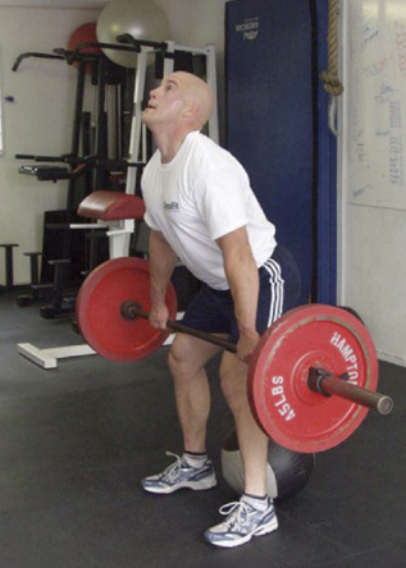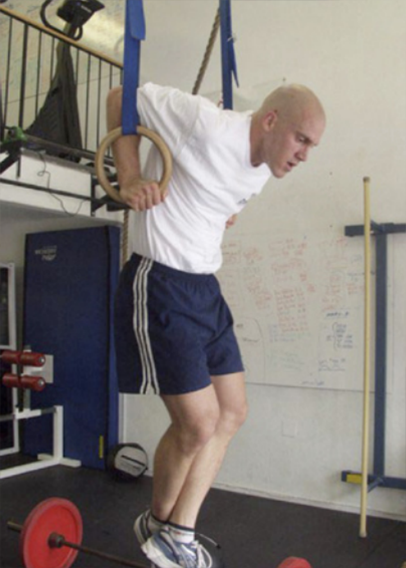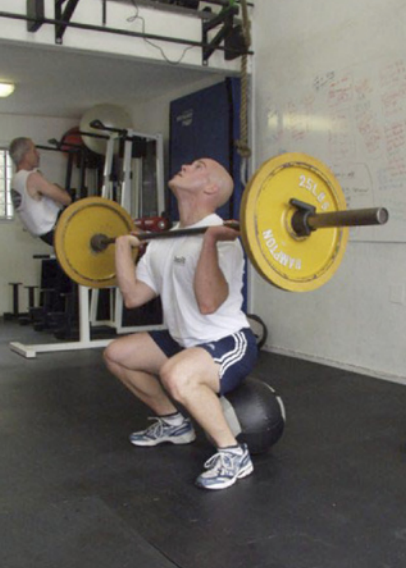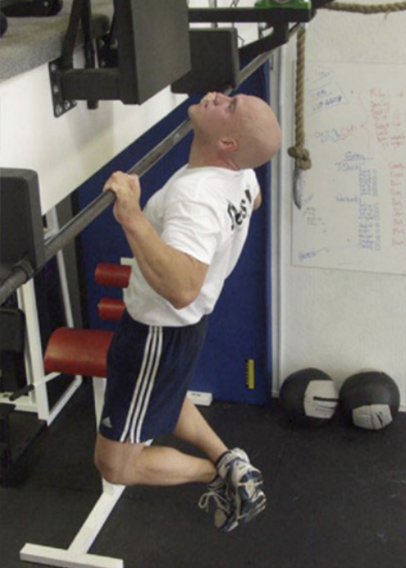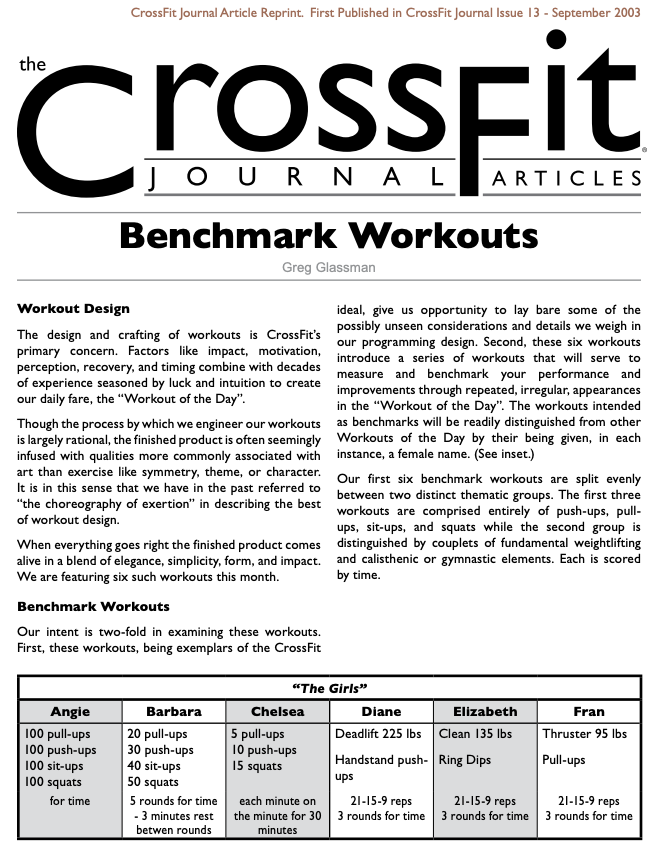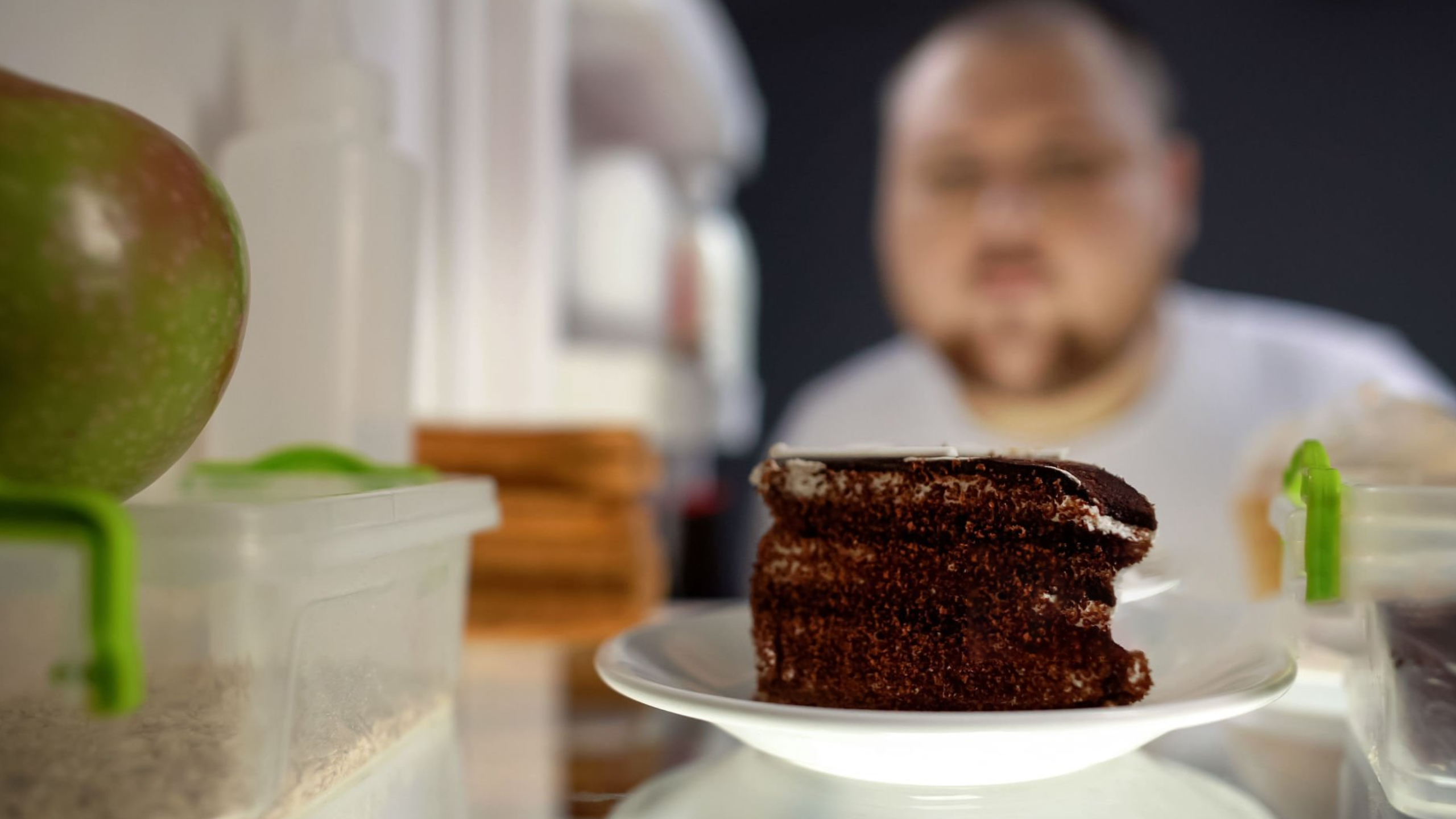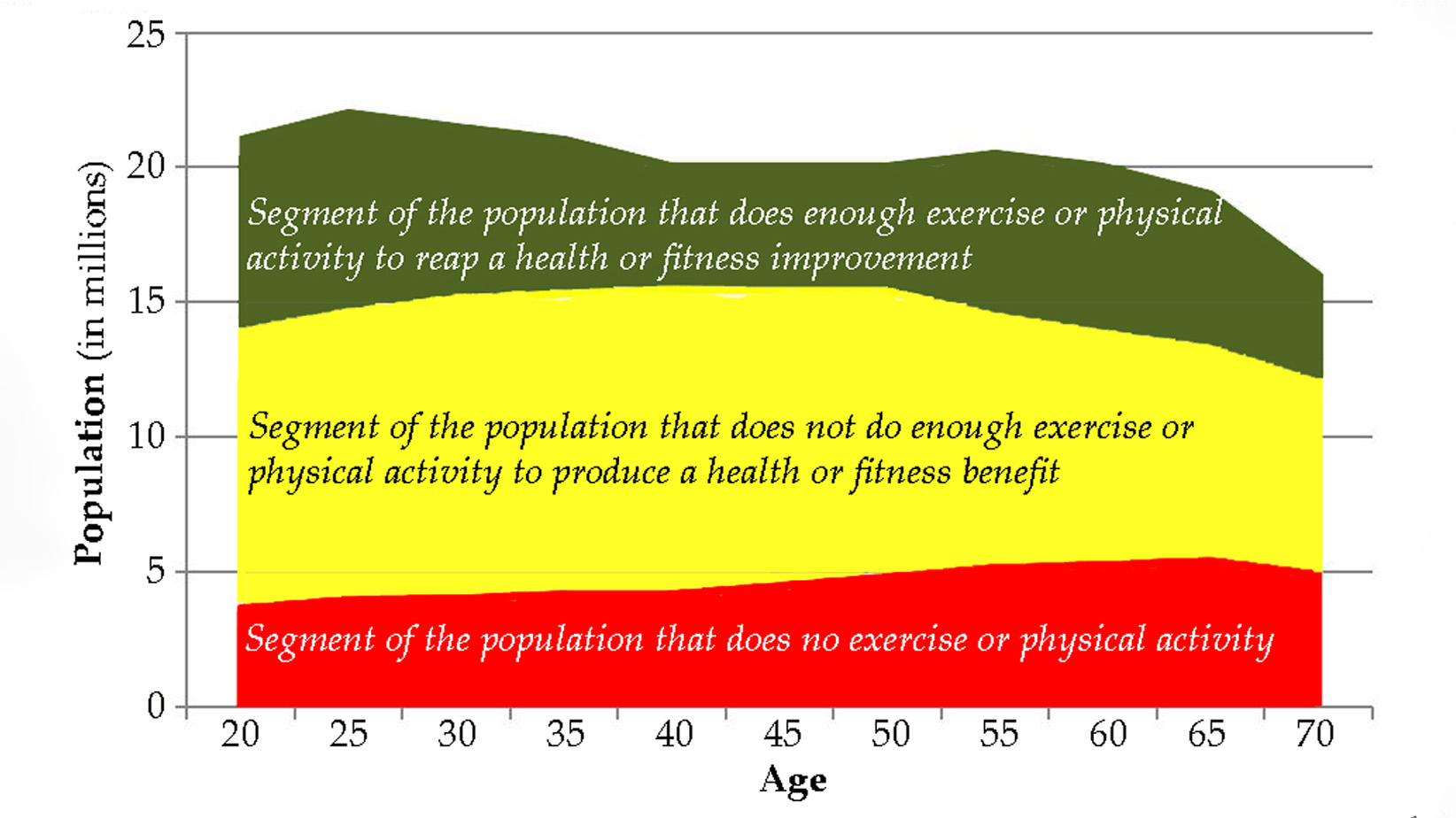Workout Design
The design and crafting of workouts is CrossFit’s primary concern. Factors like impact, motivation, perception, recovery, and timing combine with decades of experience seasoned by luck and intuition to create our daily fare, the “Workout of the Day”.
Though the process by which we engineer our workouts is largely rational, the finished product is often seemingly infused with qualities more commonly associated with art than exercise like symmetry, theme, or character. It is in this sense that we have in the past referred to “the choreography of exertion” in describing the best of workout design.
When everything goes right the finished product comes alive in a blend of elegance, simplicity, form, and impact. We are featuring six such workouts this month.
Benchmark Workouts
Our intent is two-fold in examining these workouts. First, these workouts, being exemplars of the CrossFit ideal, give us opportunity to lay bare some of the possibly unseen considerations and details we weigh in our programming design. Second, these six workouts introduce a series of workouts that will serve to measure and benchmark your performance and improvements through repeated, irregular, appearances in the “Workout of the Day”. The workouts intended as benchmarks will be readily distinguished from other Workouts of the Day by their being given, in each instance, a female name.
Our first six benchmark workouts are split evenly between two distinct thematic groups. The first three workouts are comprised entirely of push-ups, pullups, sit-ups, and squats while the second group is distinguished by couplets of fundamental weightlifting and calisthenic or gymnastic elements. Each is scored by time.
The First Group:
Angie, Barbara, and Chelsea
The workouts of the first group, Angie, Barbara, and Chelsea, are super simple (being comprised entirely of common calisthenics), very tough, dramatically reinforce the pull-up, and yet each presents a different metabolic challenge.

Angie and Barbara, contain pull-ups, push-ups, sit-ups, and squats. Chelsea contains pull-ups, push-ups, and squats but no sit-ups.
For each of these three workouts the pull-ups clearly present the greatest challenge. And, in the workouts’ aftermath, most athletes expressed surprise at their significant lat, rear delt, and biceps soreness. At CrossFit the pull-up is sacrosanct and everyone needs more. Angie, Barbara, and Chelsea support these values and aims.
Varied Metabolic Demands
The real story with these three workouts though is perhaps hidden by their obvious similarities. Each offers a distinctly unique metabolic stimulus. (Though, each is completely exhausting.)
“Angie”
Angie represents about 20 minutes of continuous work. Even with the necessary breaks in the pull-ups and push-ups the exertion is largely steady from start to end. For most, the tempo picks up with each new exercise. This workout has a strong aerobic flavor that increases throughout the workout.
“Barbara”
Barbara demands roughly 3 minutes of all out work punctuated by 3 minutes of rest repeated for a total of 5 intervals. At about 3 minutes of work and a 1:1 work to rest ratio this is an aerobic interval. Though three-minute efforts reach into aerobic turf they are short enough to still have a strong anaerobic character.
“Chelsea”
Chelsea timed out at 40 seconds of work for most followed by 20 seconds of rest repeated for up to 30 minutes. At 40 seconds “on” and 20 “off” this is an anaerobic interval with an abbreviated rest, which imparts a strong aerobic flavor. This is a hybrid interval like our Tabata interval.
Angie, Barbara, and Chelsea differ in metabolic demands and each shifts these demands throughout the workout. With Angie the work becomes steadier as the workout progresses. For Barbara each round takes a little longer and consequently increases aerobic demands while the rest remains constant. And, with Chelsea the rest shrinks as each round takes longer and longer to complete but cannot exceed 1 minute, so the aerobic quality asserts itself through diminishing rests.
This analysis greatly oversimplifies the bioenergetics of these workouts and the nature of the metabolic stimulus will vary depending on each athlete’s fitness and the strategy he employs to tackle the workout, but the fact remains that these workouts produce distinct and varied metabolic stimuli across several metabolic pathways; this is enormously important.
For simplicity and elegance these workouts are gems. Each requires only a pull-up bar and about fifteen square feet of space. They are whole-body with a nasty upper body component, extremely tough, metabolically challenging and collectively complete.
Great Travel Companions
For travelers, these three workouts are absolutely perfect. You can often find a bar for pull-ups in hotel gyms or in parks, and you can even pack a portable doorway pull-up bar if you want to make your hotel room a perfect gym.
The Second Group:
Diane, Elizabeth, and Fran
The workouts of the second group, Diane, Elizabeth, and Fran are timed three round couplets of fundamental weightlifting and calisthenic elements.
Diane consists of deadlifts and handstand push-ups. Elizabeth is constructed of cleans and ring dips, while Fran is built from our “thruster” and pull-ups.
“Diane”
Handstand Push-Ups
The handstand push-up will present a problem for a fair number of people. If this is a weak point for you, practice by kicking up into the handstand and lowering, slowly, down to where your head touches the ground (use a pillow or cushion) and immediately kick back up into the handstand. Eventually, by learning to go slow enough and with enough reps you’ll be able to push one up.
We’ve seen several clever assistance techniques which all work in developing the handstand push-up. We recently heard of someone using a lat pull-down bar and stack to assist handstand push-ups by hanging from the bar by the knees. That’s a great one!
The handstand push-up is a gateway movement that opens the doors to a world of drills and skills that are marvels of balance, agility, coordination, accuracy, and remarkable upper body strength. (See “Parallette Construction”) Give yourself every opportunity to learn this exercise. Diane will help.
“Elizabeth”
Ring Dips
Elizabeth requires ring dips. I’d like to think by now that you all have rings. Anywhere you can do pull-ups you can sling a pair of rings. The ring dip is to the bar dip as squats are to leg press (ouch!). If you don’t have rings please contact Tyler Haas of Power Ring Training Systems today and make things right. If you picked up rings just to complete Elizabeth it would become one of the more beneficial workouts you ever attempted solely for introducing you to the rings.
“Fran”
These three workouts capture much of the spirit of CrossFit. Each workout not only combines weightlifting and a calisthenic element but is a powerful whole body workout containing functional hip, pushing, and pulling movements.
Exploiting Weakness
But the crushing charm of these ladies lies in their magnificent capacity to root out weaknesses and humiliate you with them.
For many athletes the high rep deadlifts at 225 pounds, cleans at 135 pounds, and thrusters at 95 pounds are easy. For these same athletes handstand push-ups, ring dips, and pull-ups are very likely deficiencies. Typically, these athletes are larger.
Similarly, those athletes for whom handstand push-ups, pull-ups, and ring dips are a breeze are nearly certain to bristle at these loads and high reps in the weightlifting. Typically, these athletes are smaller.
Do these workouts favor middleweights? It doesn’t seem so. The middleweights seem to suffer at both ends.
Angie, Barbara, Chelsea, Diane, Fran and Elizabeth
According to the National Weather Service the use of “short, distinctive given names in written as well as spoken communications is quicker and less subject to error” than “more cumbersome” identification methods, so since 1953 storms have been assigned female given names.
This convenience and logic inspired our granting a special group of workouts women’s names, but anything that leaves you flat on your back and incapacitated only to lure you back for more at a later date certainly deserves naming.
In this Journal we introduce you to Angie, Barbara, Chelsea, Diane, Fran and Elizabeth. Six amazing ladies whose charms we discuss in this issue will be making irregular but repeated appearances as the “Workout of the Day” (WOD).
Only by repeating workouts can we confidently measure our progress. We’ve chosen to repeat those workouts most challenging, formative, and expressive of the CrossFit fitness ideal, and these ladies fit the bill.
Within three days of a workout bearing a woman’s name being posted on www.CrossFit.com, complete the workout and post your results to comments. We are going to develop a database around your performance on these workouts and wanted to give Journal subscribers a “heads up”.
Pace, Strategy, and Capacity
Nearly everyone will have to chop up either the weightlifting exercises or calisthenic exercises into manageable subsets. If you can blast through without stopping, these workouts take about 4 minutes apiece. If you’re less than a weightlifting gymnast with the lungs of a porpoise your times will reflect as much.
With that in mind there’s no shame in taking 60 minutes to polish off one of these workouts. If the loads are in excess of your capacity at even a few reps, then you’ll have no choice but to amend the workout with lighter loads. But, if you can manage three’s then you can cruise through the workouts with 7X3’s the first round, then 5X3’s on the second, and on the third round 3X3’s.
Rules and Preparation
For each of the six sisters, Angie, Barbara, Chelsea, Diane, Elizabeth, and Fran, the workout requires that you complete the requisite number of reps for each exercise before moving to the next exercise. You can parse up any set as needed but do not roll on to the next exercise until the specified numbers of reps are completed.
If you are doing the Workout of the Day (WOD), you are training for these workouts. Doing the WOD and applying yourself 100% to these workouts when they come around is enough. If you do them you will get better, if you get better at these you are becoming fitter.
This article, by BSI’s co-founder, was originally published in The CrossFit Journal. While Greg Glassman no longer owns CrossFit Inc., his writings and ideas revolutionized the world of fitness, and are reproduced here.
Coach Glassman named his training methodology ‘CrossFit,’ which became a trademarked term owned by CrossFit Inc. In order to preserve his writings in their original form, references to ‘CrossFit’ remain in this article.
- Download Original PDF
- Download Español (Spanish) PDF
- Download Português (Portuguese) PDF
- Download Italiano (Italian) PDF
- Download Français (French) PDF
Greg Glassman founded CrossFit, a fitness revolution. Under Glassman’s leadership there were around 4 million CrossFitters, 300,000 CrossFit coaches and 15,000 physical locations, known as affiliates, where his prescribed methodology: constantly varied functional movements executed at high intensity, were practiced daily. CrossFit became known as the solution to the world’s greatest problem, chronic illness.
In 2002, he became the first person in exercise physiology to apply a scientific definition to the word fitness. As the son of an aerospace engineer, Glassman learned the principles of science at a young age. Through observations, experimentation, testing, and retesting, Glassman created a program that brought unprecedented results to his clients. He shared his methodology with the world through The CrossFit Journal and in-person seminars. Harvard Business School proclaimed that CrossFit was the world’s fastest growing business.
The business, which challenged conventional business models and financially upset the health and wellness industry, brought plenty of negative attention to Glassman and CrossFit. The company’s low carbohydrate nutrition prescription threatened the sugar industry and led to a series of lawsuits after a peer-reviewed journal falsified data claiming Glassman’s methodology caused injuries. A federal judge called it the biggest case of scientific misconduct and fraud she’d seen in all her years on the bench. After this experience Glassman developed a deep interest in the corruption of modern science for private interests. He launched CrossFit Health which mobilized 20,000 doctors who knew from their experiences with CrossFit that Glassman’s methodology prevented and cured chronic diseases. Glassman networked the doctors, exposed them to researchers in a variety of fields and encouraged them to work together and further support efforts to expose the problems in medicine and work together on preventative measures.
In 2020, Greg sold CrossFit and focused his attention on the broader issues in modern science. He’d learned from his experience in fitness that areas of study without definitions, without ways of measuring and replicating results are ripe for corruption and manipulation.
The Broken Science Initiative, aims to expose and equip anyone interested with the tools to protect themself from the ills of modern medicine and broken science at-large.
Support the Broken Science Initiative.
Subscribe today →
recent posts
Expanding Horizons: Physical and Mental Rehabilitation for Juveniles in Ohio
Maintaining quality of life and preventing pain as we age.
